In Beijing, you cannot miss out on traditional Beijing delicacies. For example, the golden, fat-but-not-greasy roast duck of Quanjude and Bian Yi Fang, the unique instant-boiled mutton of Dong Lai Shun that does not have a strong smell and remains tender no matter how long it is boiled, the soy sauce pork elbow of Tian Fu Hao with an overflowing fragrance and a long aftertaste, the royal court cuisine of Fangshan Restaurant that you can savor in a scenic setting and gives you the feel of a member of the royal family, the pickles of Liu Bi Ju that are a must on the dining table in Beijing—one mouthful alone suffices to prove its refreshing taste... Savoring traditional Beijing delicacies is actually savoring the authentic flavor of old Beijing, which has stood the test of time in the past several decades or even hundreds of years. These “intangible cultural heritage on the tip of the tongue” are, without exception, meticulously crafted by chefs. Thanks to the chefs of generations who inherited, innovated and developed these tasty dishes, we have the chance to savor them in Beijing today.
Techniques of making roast duck
As the most famous dish in Beijing, roast duck was called “shao ya zi”, “lu shao ya” or “nan lu ya” in ancient times. According to Yin Shan Zheng Yao published in the Yuan Dynasty (1271-1368 AD), “shao ya zi” was already served on the royal dinning table. According to Di Jing Sui Shi Ji Sheng and Du Men Za Ji of the Qing Dynasty (1644-1911 AD), the royal kitchen prepared, in addition to sweet-scented osmanthus moon cakes, “nan lu ya” for the royal family during the Mid-Autumn Festival. It was a favorite of Emperor Qianlong. Bian Yi Fang and Quanjude are the leading roast duck restaurants in Beijing. Bian Yi Fang was founded in the 14th year of Emperor Yongle’s reign (1416) in the Ming Dynasty (1368-1644 AD). Quanjude was founded in the 3rd year of Emperor Tongzhi’s reign (1864 AD) in the Qing Dynasty. Both are time-honored roast duck restaurants. Roast duck is made from force-fed ducks, which are butchered, cleaned, shaped, dried, mixed with maltose and roasted before cooking. The preparation of Beijing roast duck involves techniques such as gua lu (hanging over open fire), men lu (baking on the dying fire), gang lu (baking in a vat) and cha shao (roasting). The roasted duck has crispy skin and tender meat. It’s fat but not greasy, and its delicious taste has won much reputation by both Chinese and foreign customers.
Quanjude’s gua lu technique for making roast duck
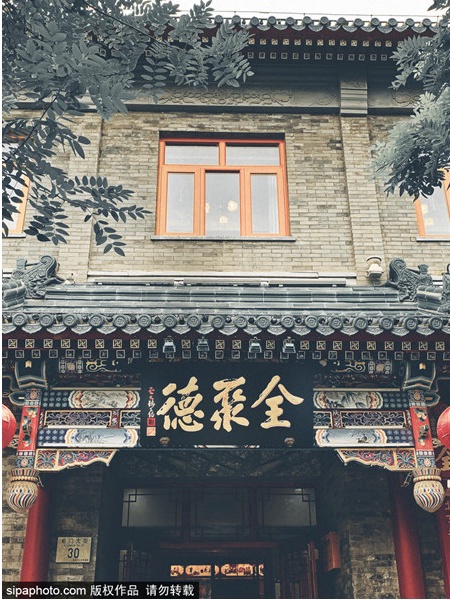
Quanjude Roast Duck Restaurant was founded by Yang Quanren in the 3rd year of Emperor Tongzhi’s reign (1864) in the Qing Dynasty. The gua lu roast duck of this restaurant is made by burning fruitwood in a specially made oven to heat the duck base in open fire. Thanks to the efforts of generations of roast duck chefs, Quanjude has now formulated a set of standard technological processes for making gua lu roast duck. It consists of 4 major processes: slaughtering and scalding, base making, roasting and slicing, which include 31 petty steps. Quanjude uses high-quality Beijing force-fed ducks as the raw material for making roast duck with its unique processing equipment and technological processes. The roasted duck is mellow in flavor, healthy and safe. It is famous both at home and abroad for its crispy skin, fresh and tender meat, bright colors and fragrant smell, and is listed as the No. 1 specialty of Beijing.
Quanjude gua lu roast duck contains many nutrient elements, such as protein, fat, vitamin B1, vitamin B2, minerals and so on. Most of the fat is evenly distributed in the muscle tissues, so the meat is tender and delicious.
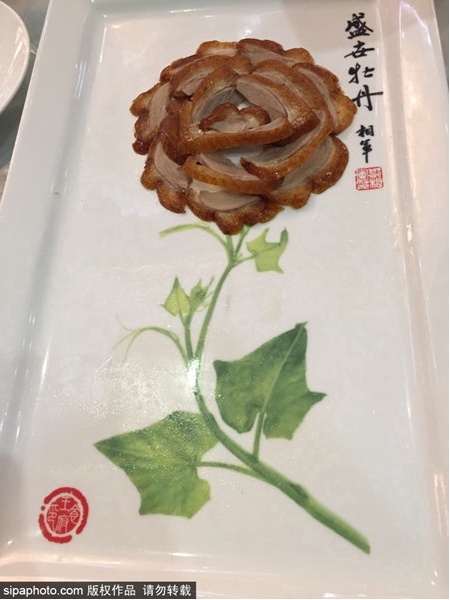
Quanjude roast duck must be tasted in a special way. To taste a better flavor, you should pick up a duck slice with chopsticks, put a little sweet flour paste on it, match it with shredded green onion or cucumber strips, and wrap it up in a lotus-leaf-like pancake; you can also put some sweet flour paste on the duck and wrap it up together with shredded scallion in a sesame pancake. In addition to roast duck, Quanjude was the first to prepare for an all-duck banquet, at which roast duck can also be served.
Store: Quanjude (Qianmen Street)
Tel.: 010-67011379
Address: No.30, Qianmen Street, Dongcheng District, Beijing
Bian Yi Fang’s men lu (baking on the dying fire) technique for making roast duck
Bian Yi Fang was founded in the 14th year of Emperor Yongle’s reign (1416 AD) in the Ming Dynasty. It is mainly involved in the preparation of men lu roast duck. The preparation of men lu roast duck does not require open fire. The finished product is jujube red, bright and crispy on the outside, and white and tender on the inside. Bian Yi Fang’s men lu technique for making roast duck developed constantly thanks to the efforts made by generations of roast duck chefs. The men lu technique, the selection of ducks to make the duck base, and the roasting of sliced duck are collectively called the “three stunning technique” of Bian Yi Fang.
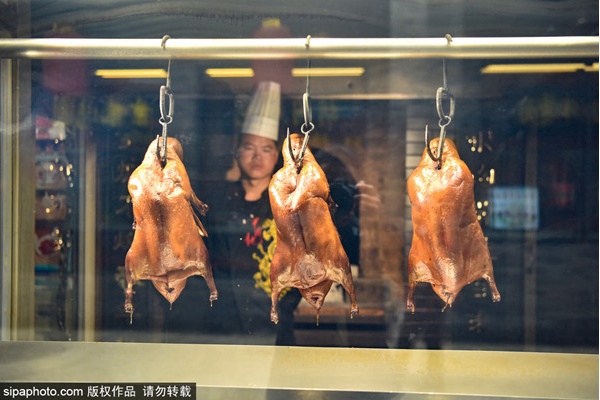
For hundreds of years, the delicious, crisp and tender roast duck of Bian Yi Fang has held considerable appeal for diners home and abroad. The famous Ming Dynasty official Yang Jisheng once presented a horizontal inscribed board to Bian Yi Fang. Emperor Qianlong, many officials and scholars visited Bian Yi Fang. Today, more and more people from all walks of life come to taste men lu roast duck at Bian Yi Fang. Chinese Government leaders, social celebrities and foreign heads of state have paid their visits and left tons of precious inscriptions. In the past 600 years or so, Bian Yi Fang developed unique roast duck techniques and a corporate culture, exerting a far-reaching social impact.
“Bian Yi Fang” is one of the first Chinese restaurants to be awarded the title “China Time-honored Brand” by the Ministry of Commerce. At present, Bian Yi Fang Roast Duck Group Co., Ltd. has only a handful of all-round roast duck chefs. The skills and growth of young technicians cannot meet the needs of skill inheritance and development. At the same time, the brand image of Bian Yi Fang men lu roast duck is being adversely affected by fake and inferior products amid fierce competition on the market. It is therefore urgent to take effective measures to ensure the inheritance of this excellent traditional handicraft.
Store: Bian Yi Fang Roast Duck (New World)
Tel.: 010-67088680
Address: 3/F, Youth Hall, New World Department Store, No. 3-5, Chongwenmenwai Avenue, Dongcheng District, Beijing
Dong Lai Shun’s technique for making instant-boiled mutton
Dong Lai Shun Restaurant is representative of the Muslim cuisine in Beijing. It was founded by Ding Deshan at the north gate of Dong’an Market on Wangfujing Street in Beijing in the 29th year of Emperor Guangxu’s reign (1903 AD) in the Qing Dynasty more than 100 years ago. Dong Lai Shun mutton hotpot is an icon of northern hotpot, known as the “No. 1 Hotpot in China”. In November 1955, Dong Lai Shun became a public-private joint venture. It was converted into a company in 1988, and developed into the Beijing Dong Lai Shun Group Co., Ltd. in 2003.
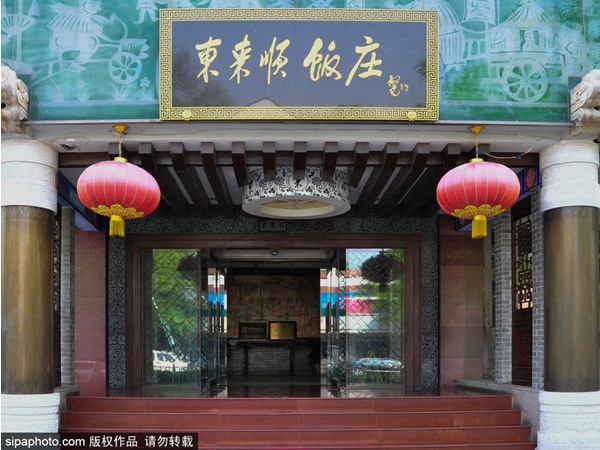
Dong Lai Shun’s mutton hotpot production technique combines mutton batch production and meat cutting, hotpot production, sugared garlic production, seasoning production and other technologies. It has eight major characteristics: select ingredients, sophisticated cutting techniques, fragrant seasoning, fierce fire, fresh primary soup, crisp sugared garlic, minute ingredients, and complete accessories, creating a unique food culture through the harmonious unity of color, aroma, taste, shape, and utensils. Dong Lai Shun has always been loved by people from all walks of life. Government leaders, celebrities and ordinary people are all welcomed here to taste the authentic mutton hotpot. Today, Dong Lai Shun seeks joint development, expansion, and intensive management. It strives to reduce costs, maintain a people-friendly business model, and draw the masses close to itself. However, due to historical reasons and the renovation of Wangfujing Street, Dong Lai Shun Restaurant has moved from its original site. A large amount of its precious historical paperwork and experienced staff have been lost in this process. The technique is in need of rescue and protection.
Store: Dong Lai Shun Restaurant (Wangfujing)
Tel.: 010-65139661
Address: No. 198, Wangfujing Street, Dongcheng District, Beijing
Yue Sheng Zhai’s technique for making sauced and braised beef and mutton
Yue Sheng Zhai was founded by Ma Qingrui in the 30th year of Emperor Qianlong’s reign (1765 AD) in the Qing Dynasty. Because the restaurant was located south of Xiyueqiang Road at Qianmen Embrasured Watchtower in Beijing and opened during Ramadan of the Hui nationality, it was named “Yue (moon) Sheng Zhai” to suggest the hope for prosperity month after month. Yue Sheng Zhai is famous for its sauced and braised mutton. It’s highly acclaimed in Beijing’s halal food industry.
Yue Sheng Zhai prepares mutton in two ways: saucing and braising. Assimilating palace saucing technology and traditional folk characteristics, it also introduces the health preserving theory of traditional Chinese medicine and related medical knowledge. More than 20 kinds of spices with both seasoning and medicinal value are used in the production. The prepared mutton and beef is not only tasty, but also nourishing and health-preserving.
Yue Sheng Zhai’s technique for making sauced mutton is complicated and has special emphasis on temperature. In addition to material selection, formula and unique technology for making primary soup, it also involves about 20 procedures including material inspection, material selection, soup making and cooking. In the whole production process, Yue Sheng Zhai always follows the principle of “excellent materials, equal priority to fat and thin mutton, painstaking efforts; exquisite formula, superb color and taste, generosity in spending; fine production, saucing complemented by braising, and saving no labor”. The sauced mutton is fat but not greasy, thin but not chewy, charred on the outside but tender on the inside, crisp and refreshing, not smelly or greasy, moderately salty, and palatable. It is properly mixed with the fragrance of mutton, sauce, medicine and fat.
Yue Sheng Zhai’s cooked mutton was once a famous palace dish. A lot of Qing Dynasty books contain records of it, and many famous people wrote inscriptions for it. In this sense, Yue Sheng Zhai’s sauced and braised mutton and beef serve as a cultural medium, and can shed light on the research on traditional Chinese diet culture. At present, Yue Sheng Zhai serves as a supplier of Muslim meat products for the Islamists in Beijing. It is also responsible for providing Muslim meat products for domestic and international conferences.
Store: Yue Sheng Zhai (Qianmen)
Tel.: 010-63030370
Address: No.1, Qianmen Street, Dongcheng District, Beijing (opposite the Dabei Photo Gallery)
Tian Fu Hao’s technique for making soy sauce pork elbow
Tian Fu Hao Spiced Pork Shop was founded in the 3rd year of Emperor Qianlong’s reign (1738 AD) in the Qing Dynasty. At that time, Shandong was affected by a severe drought and not a single grain was reaped. Liu Fengxiang, a native of Ye County in Shandong, and his grandson Liu Diming fled to Beijing in the hope of securing a better life. He opened a spiced pork shop in the northeast corner of Xidan Memorial Archway. The shop was named “Tian Fu” to suggest the hope for heaven’s blessings. The soy sauce pork elbow made by Tian Fu Hao is crisp, delicious and superb, attracting high-ranking officials and ordinary people alike. Empress Dowager Cixi praised it after a taste and granted it the “Tian Fu Hao Waist Tag”, ordering Tian Fu Hao to deliver a fixed amount of spiced pork elbow to the palace on a daily basis. Since then, “Tian Fu Hao pork elbow with soy sauce” has become a well-known tribute to the palace. In 1993, “Tian Fu Hao” was rated as a “China Time-honored Brand”. Up to now, “Tian Fu Hao” has been passed down for eight generations. During its 270-year history, its pork elbow with soy sauce has always been of superior quality.
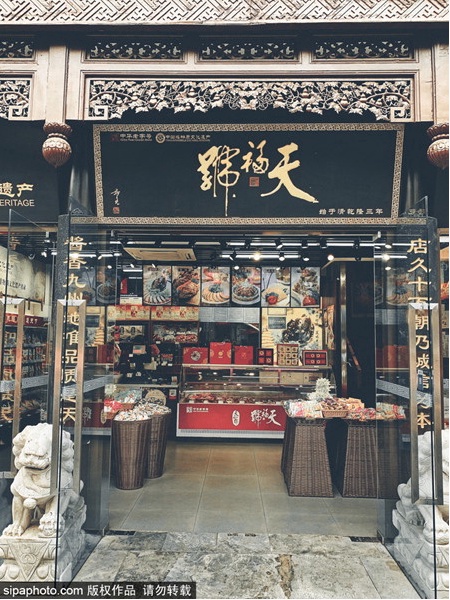
Tian Fu Hao’s techniques for making pork elbow with soy sauce were developed by Liu Fengxiang and his grandson after continued studies. The saucing method is unique. Tian Fu Hao uses superb raw materials. Its spiced pork elbow with soy sauce is fat but not greasy, thin but not chewy, smooth and mellow.
Store: Tian Fu Hao(Qianmen)
Tel.: 010-63035726
Address: No.19, Qianmen Street, Dongcheng District, Beijing
Du Yi Chu’s technique for making shaomai (a type of traditional steamed dumpling)
Du Yi Chu was founded in the 3rd year of Emperor Qianlong’s reign (1738) in the Qing Dynasty. It was originally the small restaurant “Wang’s Liquor Store” opened by Wang Ruifu, a native of Shanxi. In the 17th year of Emperor Qianlong’s reign (1752), it was renamed “Du Yi Chu” and sold shaomai.
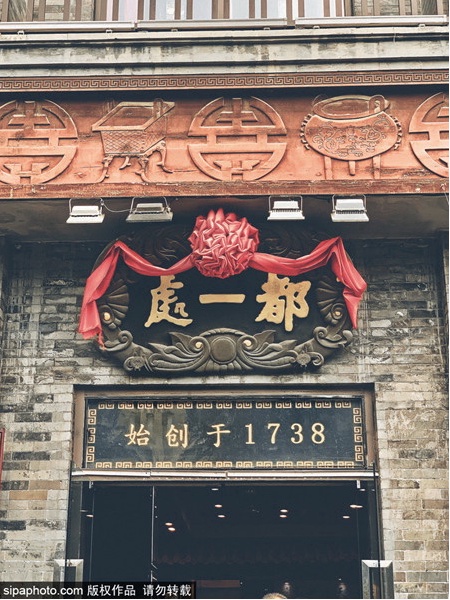
Over the course of hundreds of years, Du Yi Chu developed a complete set of exquisite techniques for making shaomai. Among them, the wrapper-making technique is arguably a stunning one, with 24 folds each. Du Yi Chu is the only restaurant in the country that produces so many varieties of shaomai. The restaurant first gained fame for its pork stuffing, beef stuffing, vegetable stuffing and “Three Fresh Delicacies” (pork, sea cucumber and shrimp) stuffing shaomai. Later, it suited seasonal changes by introducing seafood shaomai with fish, crab and shrimp stuffing, as well as four-season shaomai with pork plus cabbage, leek, fennel, pumpkin, scallion or zucchini as the stuffing. Since the 1980s, Du Yi Chu has developed tonic shaomai such as hawthorn shaomai, poinsettia shaomai, medlar shaomai, etc., and has innovated the process to produce featured shaomai such as bi-color shaomai, colorful shaomai, emerald shaomai, mint shaomai, etc. At the same time, it actively enriches the flavours, introducing over 30 kinds of shaomai with over ten categories of flavours, such as sour, sweet, salty, fresh, fragrant and spicy steamed dumplings.
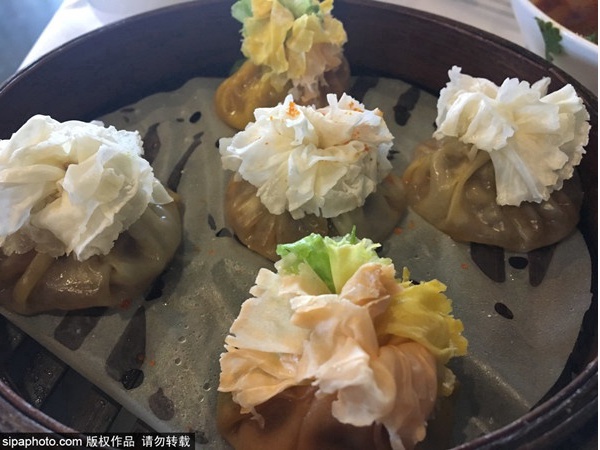
Du Yi Chu’s shaomai are unique, delicious and ornamental. The top of the shaomai is wrapped with 24 folds like a skirt on the thin waist. The wrapper is thin, transparent and elegant, revealing the green vegetables inside. It is fragrant but not greasy, with an endless aftertaste. The shaomai produced by Du Yi Chu has won the first place in the National Cooking Contest, the “Golden Tripod Award” and the “Famous Chinese Snacks Award”, and Du Yi Chu Restaurant has also won the title of “Chinese Restaurant. Brands”.
Store: Du Yi Chu Steamed Dumplings Restaurant (Qianmen)
Tel.: 010-67021671
Address: No.38, Qianmen Street, Dongcheng District, Beijing (east entrance to Dashilan)
Fang Shan’s (Qing Dynasty imperial meal) cuisine techniques
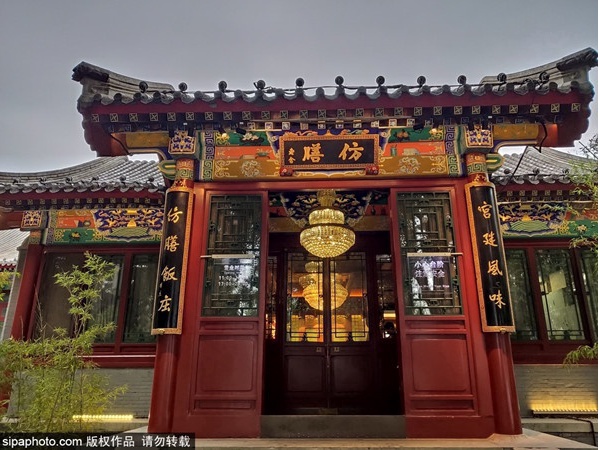
Fang Shan Restaurant is a time-honored Chinese restaurant that serves palace-style dishes. It is located in Yilan Hall, Dao Ning Zhai in Beihai Park, and other ancient buildings built during the Qianlong period. It was founded in 1925 by several chefs from the former Qing Dynasty Imperial Kitchen. “Fang Shan” means dishes and snacks are specially made according to the method of imperial kitchens. It has a history of 85 years.
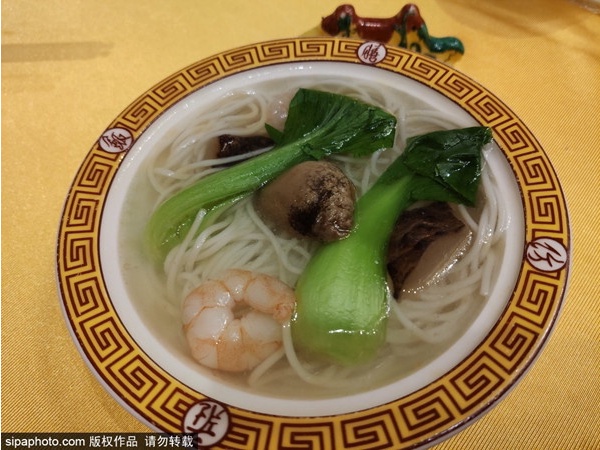
Fang Shan Restaurant researches, inherits, innovates, manages and protects imperial cuisine of the Qing Dynasty. It has always maintained the palace flavor in the past several decades. In order to discover and develop famous palace dishes, Fang Shan Restaurant dispatched its staff to the Palace Museum multiple times, discovering hundreds of dishes developed in the Qianlong and Guangxu periods from a sea of imperial food files. Among them, shark’s fin with phoenix tail, golden toad and jade abalone, first-class eatable bird’s nest, braised prawn, palace gate fish, chicken breast, etc. are the most distinctive, and famous desserts include mashed peas cake, rolls of kidney bean flour, steamed cakes of corn flour, seasame-seed cookies cake with meat filling, etc. In 1979, Fang Shan Restaurant became the first restaurant in China to introduce Qing Dynasty imperial cuisine after research and investigation, coming into the spotlight of the international cuisine community. The “eight precious mountain, sea, bird, and grass delicacies” as well as Manchu barbecuing and Han braising are opted for in imperial cuisine, which brings together northern and southern flavors and presents them in a fantastic way.
Store: Fang Shan Restaurant
Tel.: 010-64011889
Address: inside the north gate of Beihai Park, Beijing (near Jiu Long Bi)
Liu Bi Ju’s technique for making pickles
Liu Bi Ju pickles and sauces shop was built in the Jiajing period of the Ming Dynasty. It was named after its management concept of “six things that must be done” to maintain superior quality. Liu Bi Ju was founded by the three sons of the Zhao family in Linfen County, Shanxi Province. It has a history of more than 470 years and is one of Beijing’s time-honored brands. The pickles it makes are famous for their strong sauce fragrance and crisp and tender mouthfeel. This has been recorded by scholars since the Qing Dynasty.
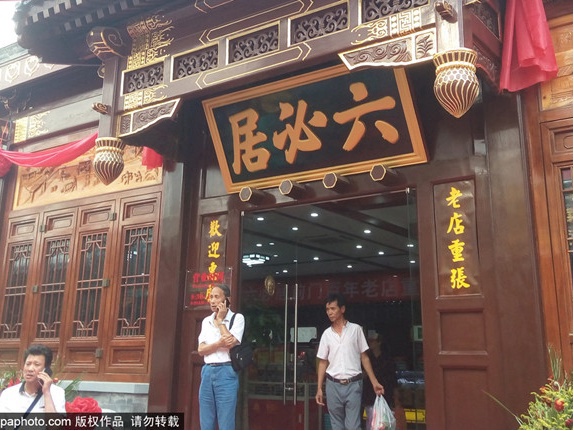
Liu Bi Ju pickles are famous for their unique material selection, complicated production and rigorous workmanship, and have been handed down from generation to generation orally. The production prioritizes quality, the operation emphasizes honesty, the products are diversified, the packaging is novel, and the service is excellent. It enjoys a good reputation among customers. This is also the key reason why Liu Bi Ju has continued to flourish for hundreds of years.
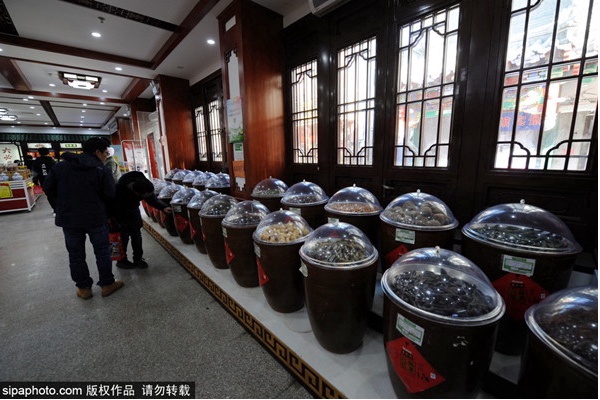
As a famous and time-honored brand in Beijing, Liu Bi Ju boasts a profound corporate culture. First of all, it strictly abides by the traditional “six musts” (Liu Bi in Chinese) production and management principle, and stresses that “raw materials must be carefully selected, materials must be real, producing process must be clean, processing skills must be precise, equipment must be superior and spring water for preserving pickles must be authentic”. Liu Bi Ju emphasizes standardization and honesty in its management and operation. It was one of the first to adopt contractual partnership and joint stock system, and attaches importance to culture and publicity. This provides reference for the development of a modern enterprise culture and the establishment of business model, and serves as a medium for the promotion of a business culture.
Store: Liu Bi Ju (Qianmen)
Tel.: 010-63035109
Address: No.3, Liangshidian Street, Qianmenwai, Dongcheng District, Beijing
Wang Zhi He’s technique for making fermented bean curd
Tofu was invented in China in the Han Dynasty. To store up the tofu, people added vinasse to it, thus creating the fermented bean curd. The technology for making fermented bean curd improved in the Qing Dynasty. It was then that the famous Wang Zhi He fermented bean curd appeared. The traditional production technology has been passed on to this day.
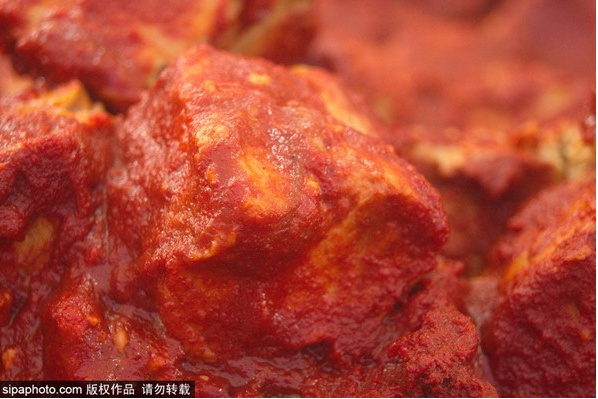
In the eighth year of Emperor Kangxi’s reign (1669) in the Qing Dynasty, Wang Zhihe, a successful candidate in the imperial examinations at the Anhui provincial level, went to Beijing to take the imperial examination and lived in the Anhui Guild Hall in Beijing. During the preparation, he made a living by selling tofu. Wang Zhihe used his hometown’s technique for making fermented bean curd to preserve the leftover tofu. In this way, he inadvertently invented the unique variety of stinky tofu. Subsequently, the stinky tofu business prospered. So Wang Zhihe gave up the examination and started his business. In the 17th year of Emperor Kangxi’s reign (1678) in the Qing Dynasty, he set up the “Wang Zhi He South Sauce Shop” on Yanshousi Street, Qianmenwai. He sold stinky tofu in the front of the shop and made it in the backyard.
Wang Zhi He’s technique for making fermented bean curd is a continuation of the technology for making hair mold fermented bean curd. The shop mainly produces red fermented bean curd and green fermented bean curd (stinky bean curd). The product is “delicate, soft, fresh and fragrant”. Wang Zhi He fermented bean curd is mainly made from soybeans, to which red wine, liquor, white sugar and salt are added. It is produced through microbial fermentation, and involves a complex production process. From the input of raw materials to the output of finished products, dozens of processes are required, including the selection, cleaning, soaking, and grinding of soybeans, separation of pulp and residue, heating of soybean milk, solidification, squeezing, cutting, inoculation, early-stage fermentation, pickling, filling, and late-stage fermentation. These processes normally take more than three months. Many tools used to be employed in the making of Wang Zhi He fermented bean curd, including vats, stone mills, pots, stones, wooden boards, food steamers, jars, etc. Historically, eating fermented bean curd was an important way for the working people to get vegetable protein. Wang Zhi He fermented bean curd is a fermented bean product. It has both nutritional and medicinal values, and can reduce cholesterol content and lower blood pressure. It is an ideal health food.
The production of Wang Zhi He fermented bean curd has risen in recent years. The “Wang Zhi He” trademark has been listed as a “China Well - Known Trade Mark” by the Chinese government, and Wang Zhi He South Sauce Shop has also been rated as a “China Time-honored Brand” by the Ministry of Commerce. Wang Zhi He fermented bean curd is sold in 31 provinces, cities and autonomous regions in China and is exported to the United States, Canada, Australia and the European Union. It has won the favor and acclaim of consumers home and abroad.
Store: Wang Zhi He fermented bean curd is available at most supermarkets.
Wu Yu Tai’s technique for making jasmine tea
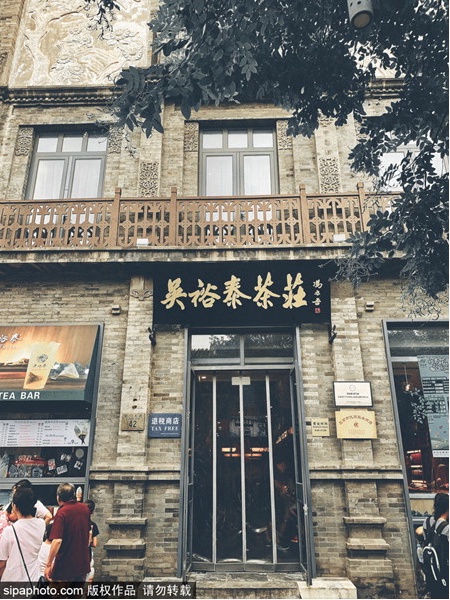
Scented tea, also known as “fumed tea”, “cellared tea” or “scented slices”, falls into the category of reprocessed tea. Jasmine tea is made by repeatedly scenting green tea with jasmine flowers. The tea brings out flower fragrance, and flowers add to the flavor of tea in turn. Tea flavor and flower fragrance are ingeniously blended to create the unique quality of jasmine tea. It is called the most precious scented tea.
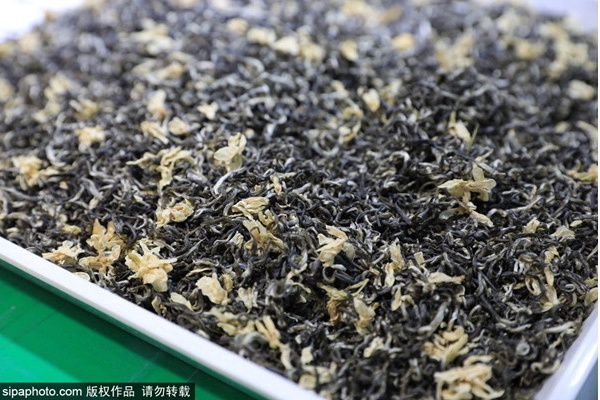
Wu Yu Tai, founded in 1887, is a well-known time-honored tea brand in China. It has always practiced the exclusive production technique that includes self-picking, self-scenting and self-assembling, involving nine processes: tea base making, flower source selection, flower maintenance, magnolia bottoming, scenting and assembling, flower cooling, flower holding out, baking and even encasement. Wu Yu Tai selects only spring tea as the tea base, and rejects raw materials “under three circumstances”. An appropriate amount of Anhui tea base is used in the blending process that employs the signature technique of “slow baking at a low temperature”. The finished Wu Yu Tai jasmine tea has a “fresh and lasting fragrance, a mellow taste, a lucid liquid color and a lingering tea flavor.”
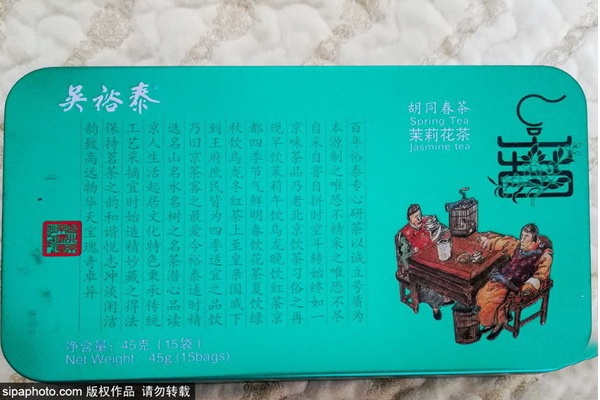
Store: Wu Yu Tai (Qianmen)
Tel.: 010-67023869
Address: No.4, Qianmen Street, Dongcheng District, Beijing



